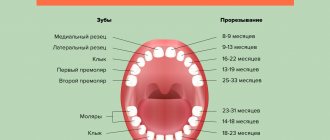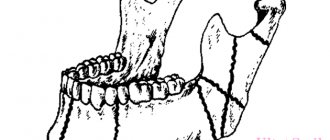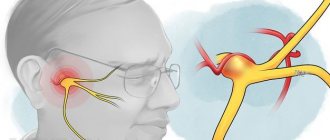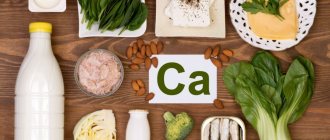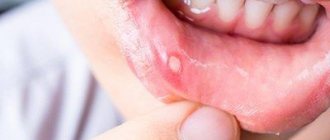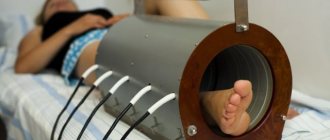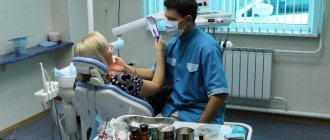Nutrition for a fracture of the lower jaw must be balanced in order to speed up the recovery process, and have a suitable consistency. The second is especially important, since a patient with a similar problem cannot move his jaw normally, and complications in swallowing function are often encountered due to a fracture of the jaw.
Jaw fractures are divided into two types: maxillary and mandibular. In the second case, the damage is much more severe than in the first, since it is the lower jaw that is responsible for grinding food. Teeth also take part in grinding food, and if they are also damaged, then normal chewing of solid food is impossible. In addition, during treatment of a fracture, special splints are often used that fix the mechanisms, protecting soft tissues from rupture, which only makes it more difficult to choose and eat food.
What nutrients are needed for fractures?
Any fracture is a serious test for a person, so a number of measures are necessary to restore health. Nutrition is the most important point. The tissues must recover as quickly as possible, so you need to adjust the menu and change your lifestyle.
To restore bone tissue, the following elements are needed:
- amino acids;
- antioxidants;
- minerals.
It is required to receive these substances daily in certain quantities. Regular nutrition cannot saturate the body with certain elements. A menu should be drawn up based on the needs of the body during this period.
Table of essential vitamins and minerals
To create a menu for the period of recovery of the body, information about the required number of elements will be useful.
Table of substances that are necessary for bone fractures, daily dosage:
| element | Dosage |
| Vitamin C | 3000 IU |
| Vitamin D | 2000 IU |
| Vitamin B6 | 2000 IU |
| Vitamin K | 1000 mcg |
| calcium | 1200 mg |
| phosphorus | 1200 mg |
| zinc | 30 mg |
| silicon | 20 mg |
| copper | 3 mg |
Using this table, you can correctly create a diet that will allow you to quickly restore your body.
Feeding methods
After this injury, the patient is in the hospital and his menu for a jaw fracture complies with all the rules. Methods of nutrition depend on the severity of the fractures received. There are many methods of feeding the victim:
- Oral nutrition. This is the best and natural method of eating food. The patient uses the usual set of dishes and cutlery only if he is able to open his mouth independently. He is first assisted by a medical professional and then learns to eat without any assistance.
- Nutrition through a special tube. In case of injuries with complications, feeding occurs using a tube. The feeding procedure with this device is carried out only by doctors or nurses. The probe is inserted into the nasal passage and then into the esophagus and stomach. A special mass is drawn into a syringe and given to the patient in small portions. Feeding occurs at least five times during the day. Most of the food is delivered at lunchtime, and less before bed. This method is used for two weeks, after which the transition to a sippy cup occurs.
- Feeding through a sippy cup. If the patient has had bimaxillary fastening of jaw fragments, that is, a two-jaw bandage has been applied, then a sippy cup with a straw is used for nutrition. The tube is inserted into the passage between the teeth where there are none or next to the wisdom tooth. The total amount of food is consumed gradually with short breaks. It is recommended to feed in a sitting position if the person’s condition allows it. For nutrition, nutrient mixtures are used that are heated to 50 degrees. Sometimes, instead of formula, you can use baby food, for example, fruit or vegetable purees, as well as oatmeal.
- Intravenous nutrition. After receiving injuries, the patient may be unconscious, which means he will not be able to swallow or open his mouth on his own. In such cases, special nutrient solutions are used, which are administered extremely slowly and carefully, 3 times a day.
- Enema. Rarely, nutritional enemas can be used for nutrition. But this method has a big drawback - not all vitamins and substances are absorbed correctly.
Tube feeding
Often victims completely refuse to eat, since any movement of the jaws causes severe and sharp pain. This problem is especially acute in the very first days after injury. But refusing to eat food can create problems that affect the digestive system, causing exhaustion of the body, which does not receive the required dose of important vitamins, microelements and energy. Also, refusal greatly slows down the rehabilitation process, so you will have to force feed for some time using special equipment or on your own.
General rules of nutrition for a broken leg, arm, spine
Proper nutrition helps speed up the process of repairing damaged tissue. Be sure to follow a daily routine and diet so that all processes in the body proceed correctly.
A diet during the recovery period is mandatory; it will help restore bone and cartilage tissue. It is necessary to increase the presence in the menu of products that contain the necessary elements: zinc, lysine, arginine, calcium, phosphorus.
At the same time, remove those dishes that remove beneficial elements or inhibit their absorption by the body. The same applies to drinks. Increase your consumption of clean water, eliminate harmful carbonated drinks.
Proper nutrition for a broken leg and other injuries should last 60 days. It is recommended to consult with your doctor, who, depending on your age and the complexity of the injury, will more accurately prescribe the timing of the diet.
Nutrition rules:
Basic diet
Often patients completely refuse to eat, since the slightest movement of a broken jaw brings severe pain. This problem is especially relevant in the first time after injury. But refusing to eat is fraught with complications that can affect the organs of the digestive system, as well as depletion of the entire body, which does not receive the microelements and energy it needs with food.
Properly selected recipes for dishes that can be consumed by a patient will reduce pain while eating, as well as saturate the body with nutrients.
In most cases, food should be thin enough to be sucked through a straw. One of the recommended dishes is chicken broth. After receiving an injury, this is the first food that it is advisable for the patient to eat.
But even with a fractured jaw, you can add variety to the patient’s diet. It is best to prepare soups whose ingredients can be ground through a sieve. It is best to mince the boiled meat from the broth in the soup several times or grind it in a blender.
Additional nutrition for the patient's body can be provided by dietary supplements. Many enteral formulas contain everything necessary to fully supply the body:
- vitamins;
- minerals;
- amino acids;
- fats;
- proteins;
- carbohydrates.
These specialty products are available either as a powder for making a nutritional shake, or in a ready-to-drink form - that is, as a drink. As a rule, such products have no contraindications, but it is still better to consult a doctor before consuming them. He can recommend the best complex for the patient. Even if the patient uses enteral formulas, he still should not refuse to eat. Eating foods in liquid form (puree soups, liquid grated porridges) will keep the digestive system normal.
In some cases, the doctor recommends tube feeding. This is necessary if a person has impaired not only chewing, but also swallowing function. The tube allows food to be delivered directly to the digestive system. If these organs are not damaged and function normally, then this method of feeding is preferable.
Foods to Eat and Avoid
It is necessary to correctly create a menu that includes products containing the largest number of necessary elements.
You need to enter the following products into the menu:
- sea fish;
- milk, fermented milk products;
- cheeses;
- nuts;
- dried fruits;
- cabbage;
- seeds;
- legumes;
- liver;
- seafood;
- caviar.
Their use helps restore the body after a fracture, they strengthen the body as a whole.
There are foods that you should avoid during your recovery. You need to understand why you should not use this or that product.
How to cook food
When the maxillofacial bones are fractured, the process of chewing food and swallowing is disrupted, so in such cases experts recommend consuming liquid or semi-liquid food.
Over time, as swelling and pain decrease, the patient can gradually switch to eating pureed and mushy foods. The most suitable option for moderate chewing disorders is dietary table No.1.
Why can our articles be trusted?
We make health information clear, accessible and relevant.
- All articles are checked by practicing doctors.
- We take scientific literature and the latest research as a basis.
- We publish detailed articles that answer all questions.
In this case, the menu is compiled on the principles of the maximum amount of protein and microelements. The products are boiled or steamed, then passed through a meat grinder. Dishes are brought to the required consistency by diluting them with broth, vegetable broth, water or milk.
Patients with a broken jaw have a problem chewing bread, so bakery products are introduced into the diet only in the form of ground crackers, diluted to a liquid sour cream with milk or broth.
The menu for a patient with a broken jaw is varied. You can easily organize a complete and balanced diet from it. The main thing is to take into account the general condition and physical activity of the patient and adjust the menu as the patient recovers.
Features of nutrition for fractures in children and the elderly
If elderly people or children suffered injuries that compromised bone integrity, then you need to be especially careful about their diet during the period of recovery of the body.
Nutrition rules:
- diversity;
- eating foods that require few enzymes to digest;
- reduce the amount of salt;
- providing the right amount of essential nutrients;
- eat at least 5 times, portions should be small.
When choosing dishes and methods of preparing them, it is necessary to take into account that people of these groups may have contraindications associated with chronic diseases or age.
External means
After the cast is removed, the patient may experience pain and swelling for a long time. To get rid of these unpleasant manifestations of injury, the doctor may prescribe ointments and gels that relieve discomfort. Such drugs have important effects:
- analgesic – relieves pain, improves motor abilities;
- anti-inflammatory – improves tissue condition, relieves inflammation, redness, swelling;
- muscle relaxant – promotes muscle relaxation, relieves excessive tone, improves the effect of painkillers;
- regenerating – stimulates restoration processes, activates metabolism in damaged tissues.
External medications have much less negative effects than oral medications. Therefore, many doctors prefer ointments and gels with local action.
First courses for fractures
First courses should be included in the menu every day without fail.
They have a positive effect on the functioning of the digestive system and saturate the body with the necessary elements. Soup broths should be prepared with vegetables or beef bones. You cannot use a large amount of spices, smoked meats should be avoided. There is no need to season soups with frying.
Experts recommend preparing borscht, cabbage soup, and rassolnik during treatment. Soups prepared with cereals, vegetables, and mushrooms are healthy.
Main courses and jellied meat for bones
Doctors recommend introducing jellied meat into the diet for a broken leg, which contains all the elements necessary for recovery.
To cook the dish, take beef bones, process them well, and simmer over low heat for several hours. Once ready, pour the broth into containers and place in a cool place. It is recommended to eat fresh vegetables daily. It is advisable to add vegetable oil to them. Sour cream or natural yogurt with a low fat content is suitable as a dressing.
Different types of cheese should be included in dishes. To prepare healthy dishes, it is recommended to take fish, liver, cabbage, and legumes. When choosing bread, you should choose coarse whole grain bread; it is better if it contains sunflower seeds.
Using a variety of fruits and berries in salads and sauces makes it possible to get the necessary vitamins and elements.
Massage
Therapeutic massage after fractures involves the use of specific techniques:
- rubbing – active movements improve blood circulation and reduce pain;
- kneading – restore muscle tone, improve tendon mobility;
- stroking – light stroking movements relax muscles, improve microcirculation;
- effleurage - improves blood flow and increases muscle contractility.
The massage therapist selects a treatment course taking into account the characteristics of the injury and the exact location of the fracture. A course of therapeutic massage helps to avoid muscle atrophy and weakness, improve mobility, relieve swelling and pain.
